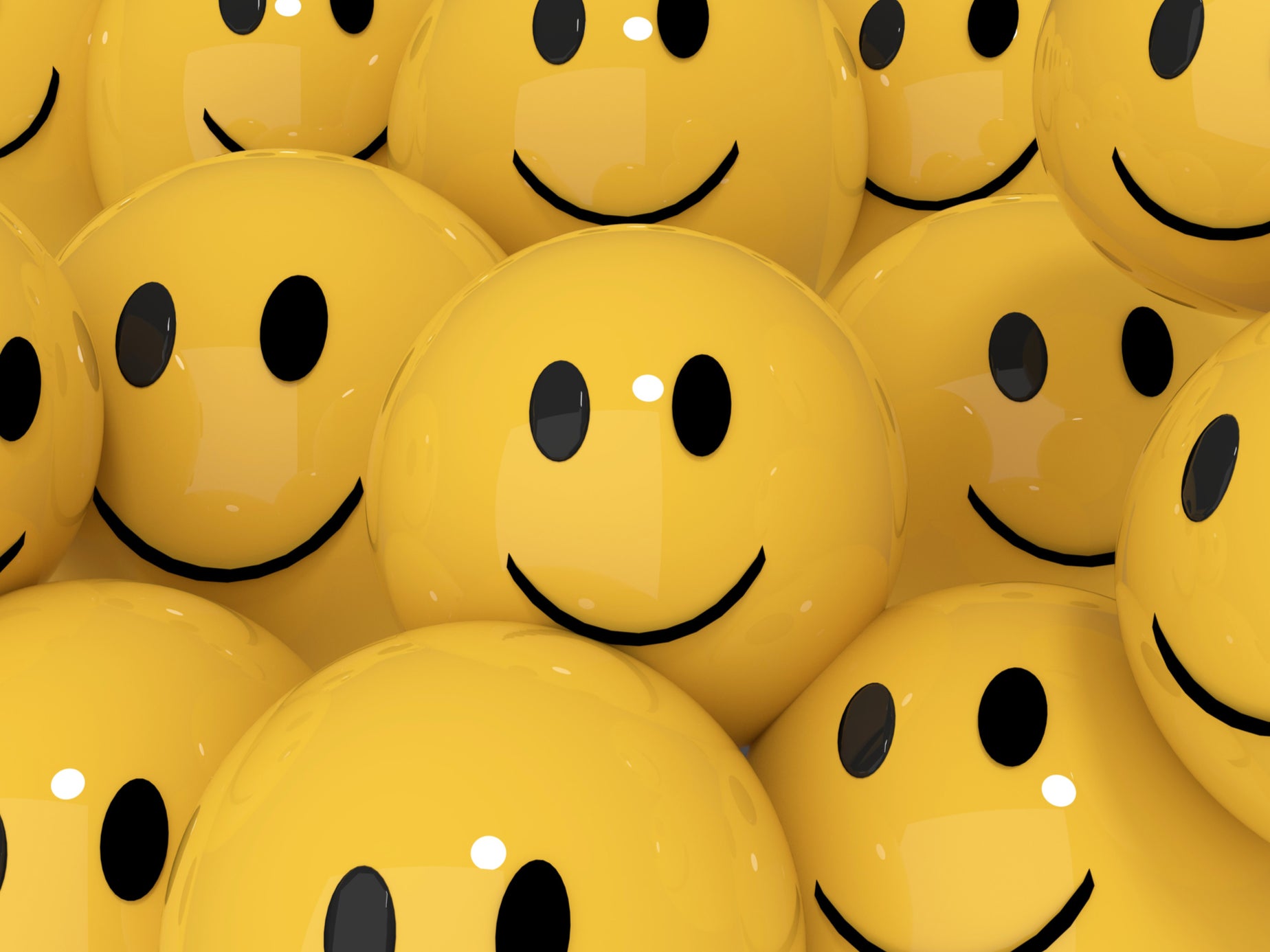Is the smiley face passive aggressive? We asked Gen-Z and Millennials what the emoji means to them
Younger people tend to use the emoji to convey sarcasm or irony

It seems Gen-Z is intent on ensuring that the divide between themselves and us, aged millennials, is clear. In recent months, we’ve heard skinny jeans are social suicide, the side-parting is a definite no-go (they don’t care whether it flatters your face shape or not) and lest we forget the dreaded c-word: cheugy.
If you have been blissfully unaware up until now, cheugy is the term for anything deemed outdated or as “trying too hard”. This includes “live, laugh, love” home décor, Ugg boots, being obsessed with having the latest Apple products, and loving Disney, to name a few. For a generation of people known for promoting diverse points of view, they certainly like to tell us what we can and can’t enjoy.
Research by consultancy firm McKinsey & Company also found that Gen-Z “believe profoundly in the efficacy of dialogue to solve conflicts and improve the world”. According to one recent article in The Wall Street Journal, this particular attention to dialogue also applies to the ways in which Gen-Z and younger millennials use emojis. A prime example of this is Apple’s smiley emoji.
Erica Dhawan, the author of Digital Body Language: How to Build Trust and Connection, No Matter the Distance, told the publication that people aged 30 and over tend to use emojis to convey the dictionary definition of what an emoji represents, while younger people, dubbed “digital natives” might ascribe additional meaning to emojis.
As expected, this has caused some confusion. While Gen-Z said they rarely use the smiley emoji for it seems “passive-aggressive”, 31-year-old cheerleading coach Sara Anderson said she was regularly using it to add “lightness” to messages when texting her team.
But are opinions on the smiley emoji as divided as they seem? We spoke to people who firmly fall in the millennial category, both below and above the age of 30 and a member of Gen Z to find out.
Gen Z: the smiley emoji is complicated
Hafeezat Bishi, a 21-year-old intern in the US, told WSJ that she felt taken aback when her co-workers welcomed her to the team with a smiley face.
She said she interpreted the smile as “dismissive” and conveying a “side-eye smile” rather than a genuine one. “I had to remember they are older, because I use it sarcastically,” she said.
Ellie York, 23, agrees with Bishi, telling The Independent that “there is definitely a more sinister passive-aggressive or sarcastic side” to the smiley emoji.
“I think it’s the eyes. It’s got an ‘oh really’ expression,” she explains. “People my age who use emojis tend to use this in conversations with each other, not as a happy response, but in a more sarcastic or ironic sense.”
However, she does interpret the emoji as a genuine smile when it is sent by someone older than her. She also uses it herself when communicating with elder colleagues.
“I’ve only ever used it in a business sense for example via email or with someone I don’t know very well,” she says.
Millennials: the smiley emoji is simply a smile
Donna Scott, 38, tells The Independent that she had never considered the possibility of the smiley emoji being interpreted as passive-aggressive.
“I always thought it was a way to show that what I was saying in a message was in a happy and positive context, as often the intention of a message can get lost.
“I don’t really see how it is passive-aggressive, I think there’s plenty of other emojis that are better suited for this, such as the raised eyebrow emoji. It actually shocked me to hear that it was seen in such a way,” she says.
In line with Dhawan’s predictions on how millennials use emojis, Scott says she uses emojis to convey the emotions they represent.
“I see emojis as a reflection of how I’m feeling, so a smiley emoji would show that I’m feeling happy, a crying emoji that I’m sad, or a laughing emoji that I find something funny,” she says.
“Hopefully, the people I send them to are receiving them with the intention I sent them with, rather than a new meaning that seems to have evolved,” she adds.
Riika Heinaaho, 29, views the smiley emoji as a friendly way to end a sentence which can be used in a plethora of scenarios.
“Let’s say you are emailing someone with a lot of critiques, and you want to soften it up, sometimes the smiley does it,” she says of one example.
“[It] just makes your whole demeanour more friendly. Also, if you are genuinely happy with something, why not throw a happy face in there,” she adds.
While Heinaaho uses the emoji in a similar way to Scott, like Yorke, she is mindful of who she is speaking to in case it is interpreted in the wrong way.
“If you put it after a negative sentence, it’s passive-aggressive!” she says. “It’s honestly best used with people you know, they know your tone and vibe so there won’t be any mix-ups.”
Subscribe to Independent Premium to bookmark this article
Want to bookmark your favourite articles and stories to read or reference later? Start your Independent Premium subscription today.

Join our commenting forum
Join thought-provoking conversations, follow other Independent readers and see their replies